Am 1. September 2018 war der kanadische Künstler Bill Burns im Atelier Amden mit der performativen Ausstellung The Salt, the Donkey, the Apple (2018) zu Gast. Burns arbeitet über Tiere und die Zivilgesellschaft in unserer technischen Weltzivilisation.
“Das Salz, der Esel, der Apfel geht ungefähr so: Zuerst besorgen wir etwas Salz, das in der Schweiz gewonnen wurde. Dann laden wir das Salz auf den Esel. Jetzt gehen wir mit dem mit Salz beladenen Esel den Berg hinauf. Jetzt finden wir Äpfel. Jetzt finden wir Honig. Jetzt kommen wir bei der Scheune an. Jetzt tunken wir die Äpfel in Salz und Honig. Jetzt essen wir sie. Das Salz, der Esel, der Apfel denkt über Handel, Ritual und Sehnsucht nach. Die Arbeit beschäftigt sich eher indirekt mit der Position, in welcher sich die künstlerische Avantgarde in der fortgeschrittenen Industrialisierung befindet. Sie setzt den zentralen Bestandteil fortgeschrittener Industrialisierung, die Verschiebung und den Austausch von Waren, in Beziehung zur Kunst. Sie befragt unser Verhältnis zu Nahrung, zu Tieren, zur Landwirtschaft und zur Natur. Sie fragt, warum Esel so trittsicher sind. Sie fragt, warum Mohammed, Jesus und andere Propheten den Esel für ihre Reisen bevorzugten. Sie fragt, warum Menschen in der Bibel zu Salz werden und warum Söldner mit Salz bezahlt wurden. Sie fragt, warum den Bienen und dem Umgang mit ihrem Erzeugnis ein ganzes Kapitel im Koran gewidmet ist und warum die Bienenpopulationen so krank geworden sind. Sie fragt, ob Wiedergeburt dadurch zustande kommen kann, dass man einen Apfel in Honig tunkt. Sie fragt, welche besonderen Beziehungen zwischen Künstler, Kurator, Landwirt und Sammler bestehen. Sie hinterfragt den Handel mit Gütern wie Kunst, Honig, Äpfeln und Salz. Und schließlich fragt sie, warum wir Sehnsucht empfinden. Ende"
– Bill Burns, 2018

 Bilder
Bilder
 Info
Info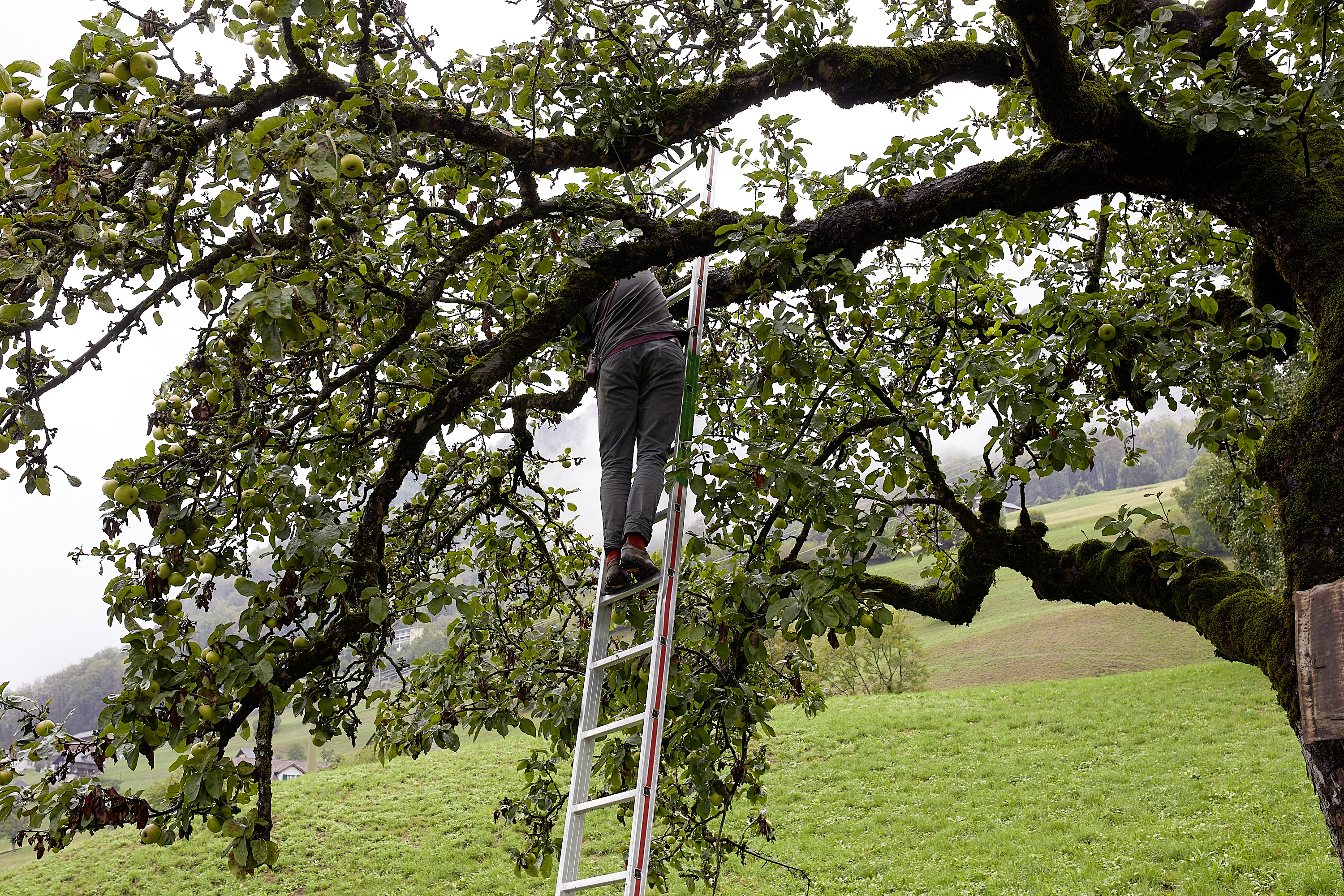
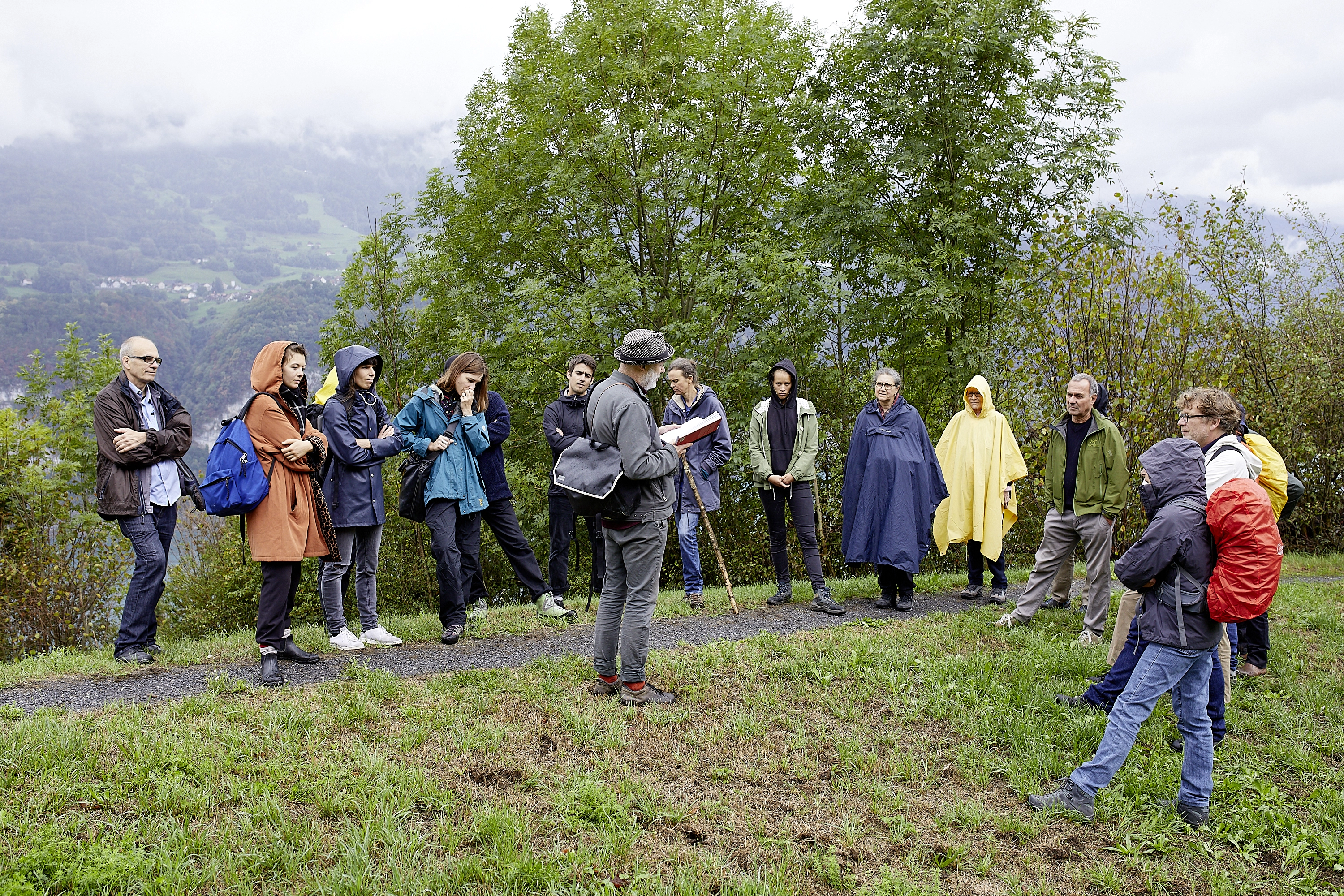


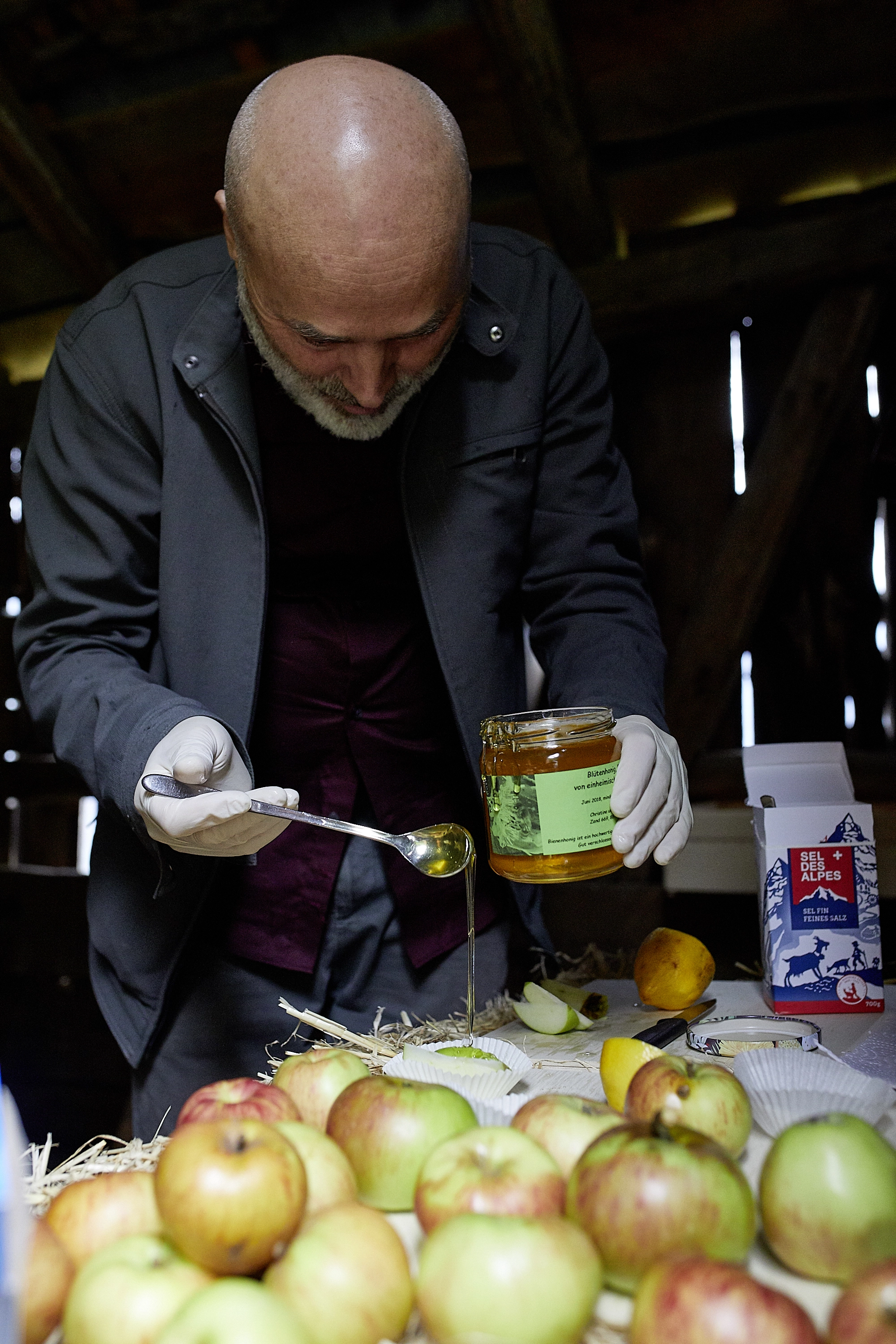

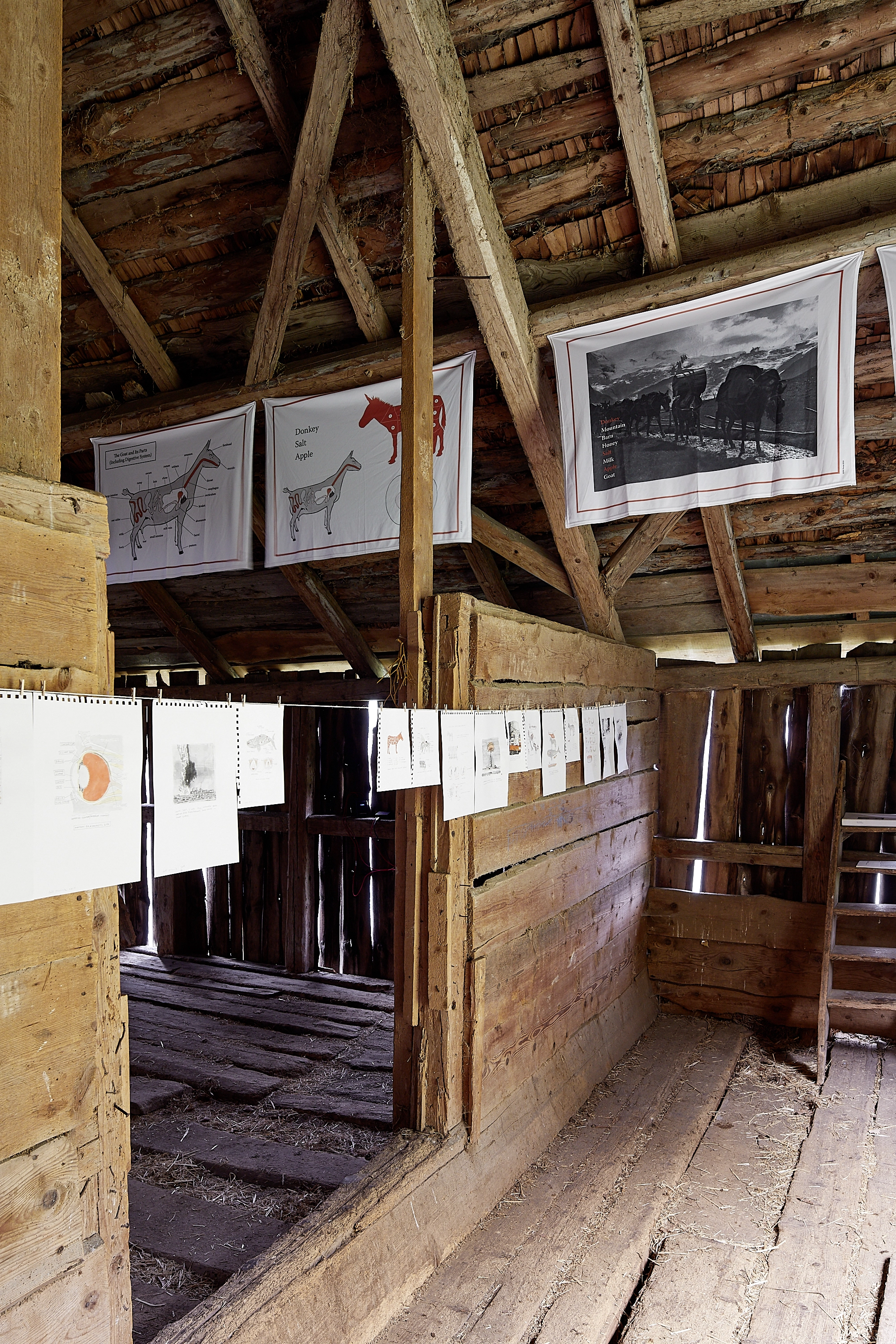
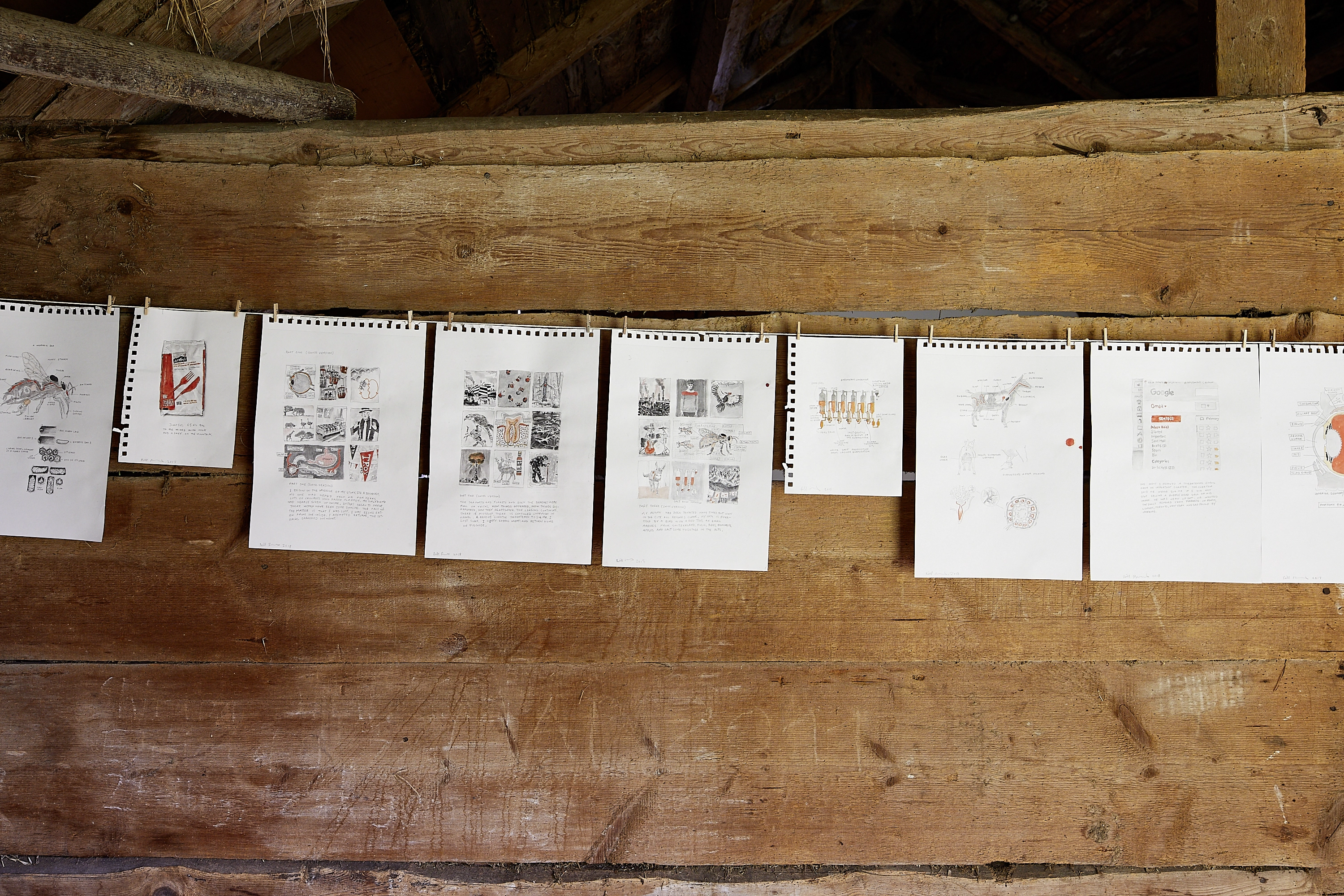
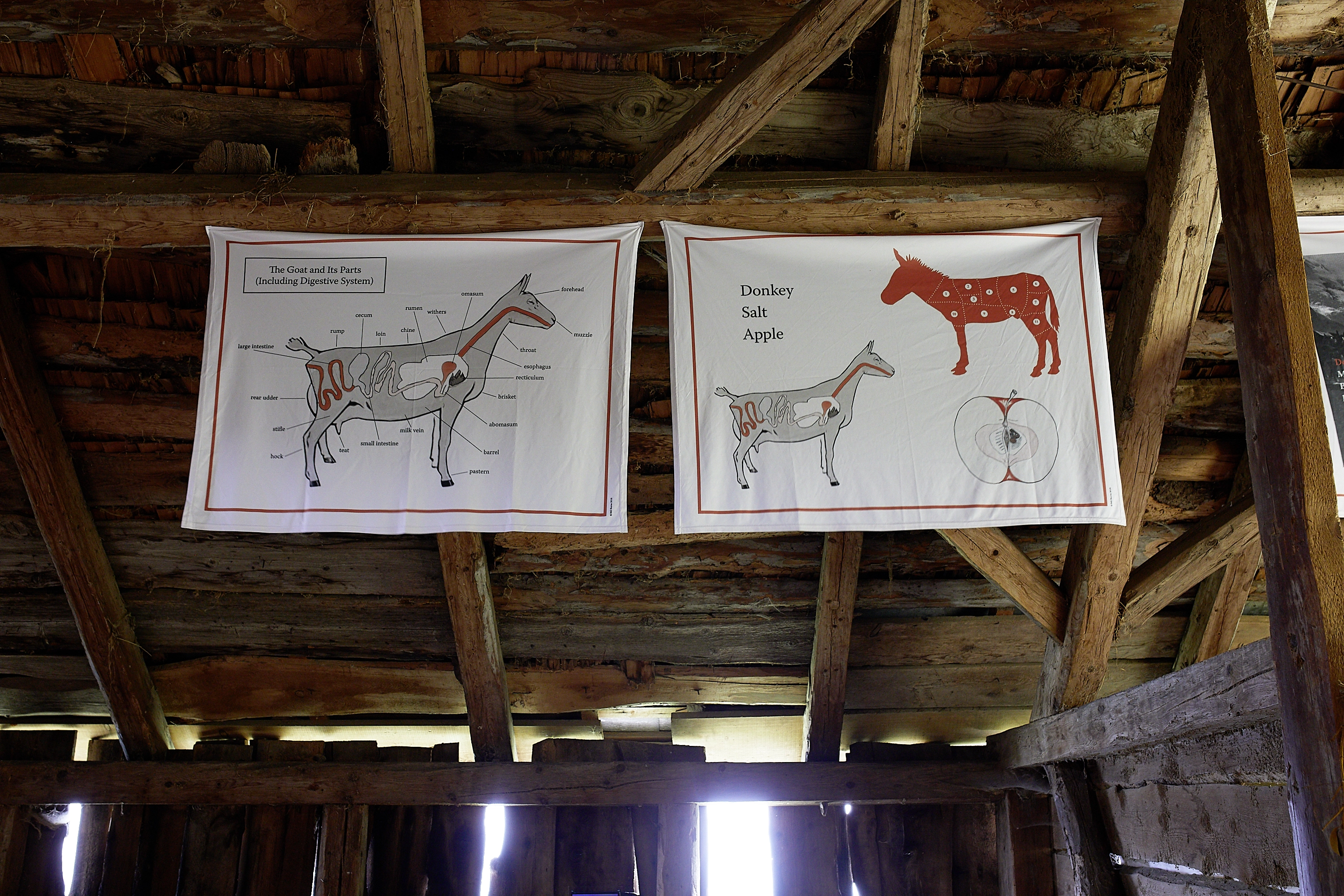

 2019, The Great Trading Project
2019, The Great Trading Project